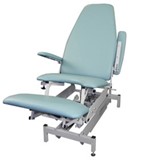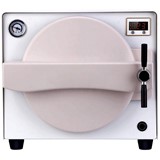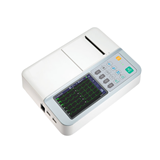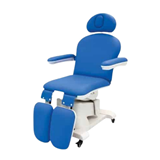A new report released by the Australian Commission on Safety and Quality in Health Care shows the use of antibiotics in hospitals fell by 7.6% between 2011 and 2015, a sign that efforts to encourage more appropriate use of antibiotics and other antimicrobial drugs is having an effect.
Antibiotics are prescribed to hospital patients to treat infections, or to reduce the risk of infections developing during and after procedures and surgery.
However, health authorities in Australia and around the world have warned that excessive or unnecessary use of antibiotics is allowing more bacteria to develop resistance. The spread of antibiotic resistance threatens to render some diseases incurable within a couple of decades, unless the process can be slowed and newer antibiotics developed.
The latest report, Antimicrobial Use in Australian Hospitals, is the 2015 annual report of the National
Antimicrobial Utilisation Surveillance Program (NAUSP). NAUSP provides standardised measurement of antimicrobial use in Australian adult public and private hospitals, and is an important partner of the Commission's Antimicrobial Use and Resistance in Australia (AURA) Surveillance System.
The NAUSP report shows that among the 159 hospitals contributing data to the program, there were 916.4 defined daily doses (DDDs) of antibiotics given to patients per 1,000 occupied bed days (OBDs) in 2015. This was 2% lower than the previous year, and 7.6% lower than the rate of 992.4 per 1,000 OBDs recorded in 2011, when 69 hospitals were contributing data to the program. The NAUSP program is administered by SA Health as part of the AURA Surveillance System.
The report indicates that the implementation of effective antimicrobial stewardship programs by hospitals and clinicians is driving the improvement in antibiotic use, ensuring that more patients receive the most appropriate antibiotic treatment.
The Commission's Senior Medical Advisor for the AURA Coordination Unit, Professor John Turnidge, said the results were heartening.
"Antimicrobial resistance is one of the major issues facing healthcare systems worldwide and seeing Australian hospitals more appropriately using antimicrobials is very encouraging," Professor Turnidge said.
"Antimicrobial stewardship programs are a cornerstone of Australia's response to antimicrobial resistance, and appropriate use of antibiotics will help considerably in slowing the development of antibiotic-resistant bacteria.
"The Commission is pleased to partner with NAUSP in this important work."
Findings from NAUSP help to strengthen antimicrobial stewardship programs by increasing awareness of prescribing and usage patterns, and providing data for education of health professionals, targeted quality improvement and monitoring of performance over time.
While the overall rates of antibiotic use in Australian hospitals continue to be higher than in the Netherlands and Sweden, they are now lower than in Denmark. Broader international comparisons are difficult because of differences in data collection methods and units of measurement between countries.
Twenty antibacterials accounted for 93% of those dispensed in Australian hospitals in 2015. These were amoxicillin-clavulanate, cefazolin, amoxicillin, flucloxacillin, doxycycline, cefalexin, piperacillin–tazobactam, ceftriaxone, metronidazole, azithromycin, benzylpenicillin, gentamicin, ciprofloxacin, vancomycin, sulfamethoxazole–trimethoprim, meropenem, trimethoprim, roxithromycin, clindamycin, and clarithromycin.
Use of highly reserved antibacterials such as colistin, daptomycin, linezolid and tigecycline – usually considered the last line of defence when treating bacterial infections – is very low, at less than 5 DDDs per 1,000 OBDs in most contributing hospitals. There is marked variation in usage rates between hospitals.
















-160x160-state_article-rel-cat.jpg)